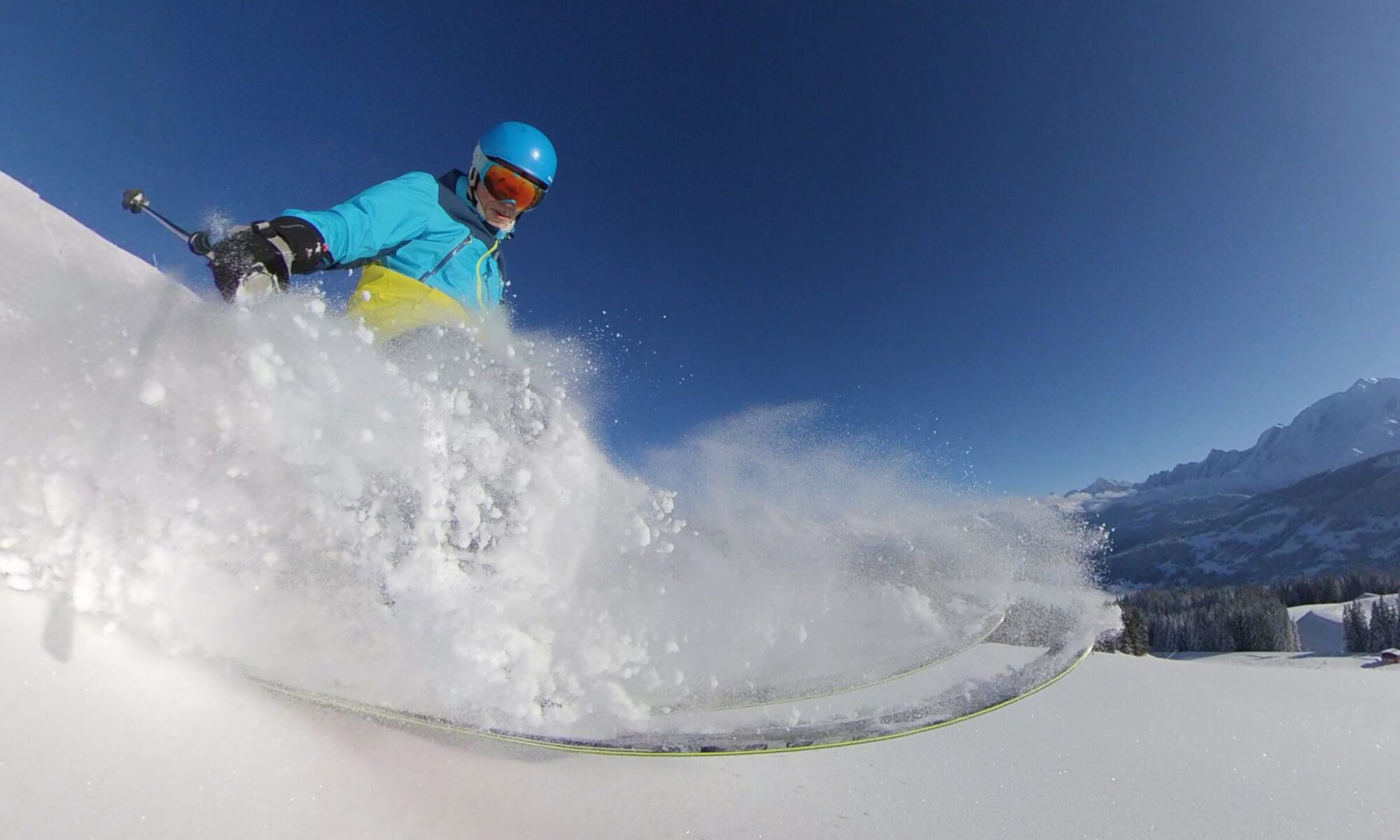My 125cm ICE Lightning carbon graphite ski poles get an honourable mention on my “ski equipment I have killed” page, praising the fact that I have failed to kill them, and I thought I’d expand on why I like them.
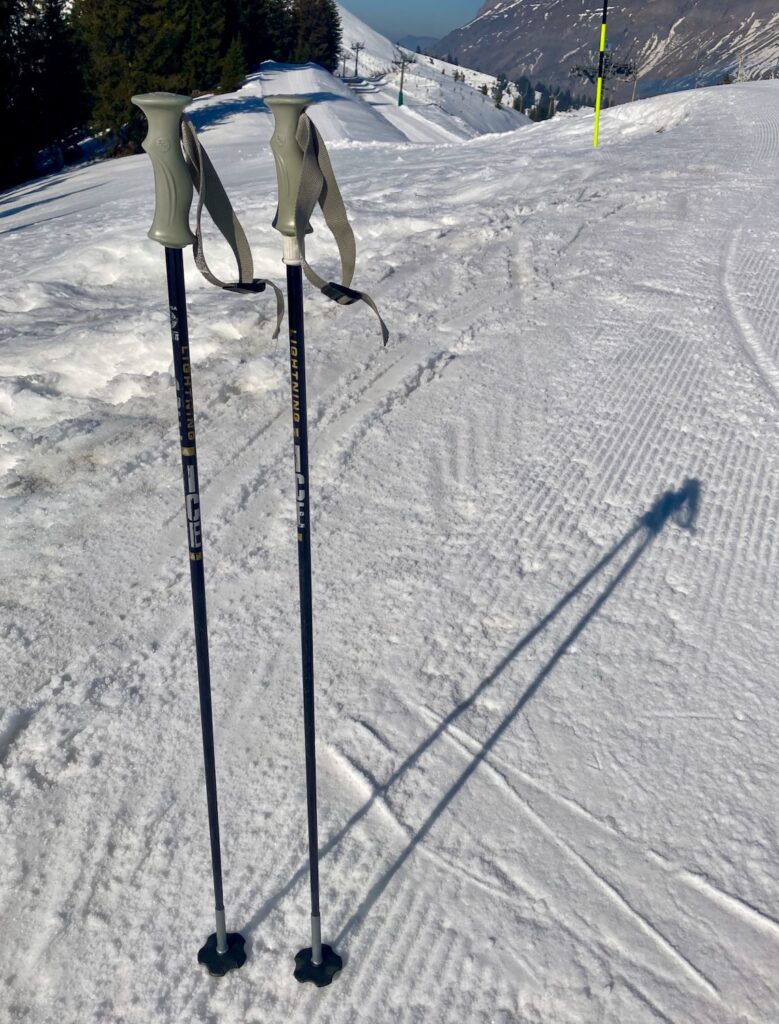
Ski poles are one of those things you don’t tend to think about much, until you break or lose one, and you find yourself feeling rather lost and annoyed. Poles are vital for balance and propulsion on the flat. Back in the pre-carving days, they were important for timing too, something that still applies a bit in powder and bumps.
“The best ski poles ever made”
Unofficial Gear Review
These poles were made in the USA by ICE Composites, based in Park City, Utah, who no longer seem to exist, though they could have morphed into this ICE Composites. I bought them in Vail, Colorado in 1998 during a very nice 10-day Christmas ski trip with my wife. Prior to these I’d had many other pairs of aluminium poles, all of which had failed in some way. Aluminium poles are light and flexy, and usually die by being bent near the middle, then break when you try to bend them back, because aluminium just doesn’t like that. They’re also prone to being sliced off by ski edges just above the basket.
The reason these poles have lasted so long is that they are made of carbon fibre. Carbon fibre is associated with super-lightweight ski touring and race equipment, which is often very high performance, but also not very strong because all the extra strength the carbon gives is traded against weight. These poles take a different approach: they are not light, but they are very stiff and incredibly strong, still solid and dead-straight after 25 years on the slopes.
The bottom of the pole just above the basket has a plastic sleeve to protect the thin bottom section from damage by sharp steel ski edges.
The handles are pretty unremarkable – a softish, grey, rubbery material. The straps are nice and strong, and very firmly attached (straps rarely break, but their attachment to the pole often does). My only complaint here is that the exit of the strap from the pole is vertical rather than horizontal, which means that the strap doesn’t sit flat against your palm.
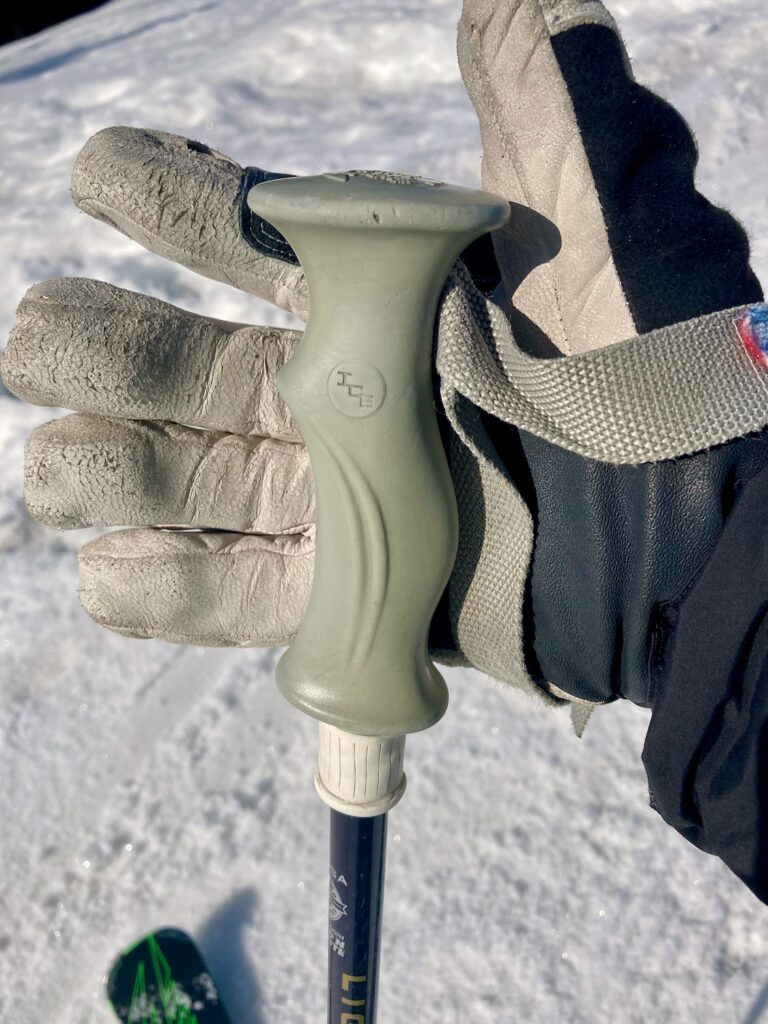
That white bit below the handle is a bit of Sugru I used to increase the diameter of the pole from the standard 18mm to 22mm. Why do that? Because that’s the standard size for bicycle handlebars, and I use it for mounting a bike light for night expeditions! Pole-mounting a light is generally better for night skiing than a head torch, because with a head torch the light source is very close to your line of sight, so you get no shadows to see surface relief and texture. The offset position on the pole means that it casts useful shadows, and also means you don’t shine your light in friends’ eyes when you’re talking to them… This can also be used as a camera mount, but hopefully you’ve seen that there are better ways of mounting cameras.
I’m not the first to wax lyrical about these poles – back in 2012, Unofficial Gear Review described these as “the best ski poles ever made”, and I’m not going to argue!
I’ve used these poles for about 800 days of skiing, and they have accumulated a few scars, but they’re so strong that they’re still as solid as ever.
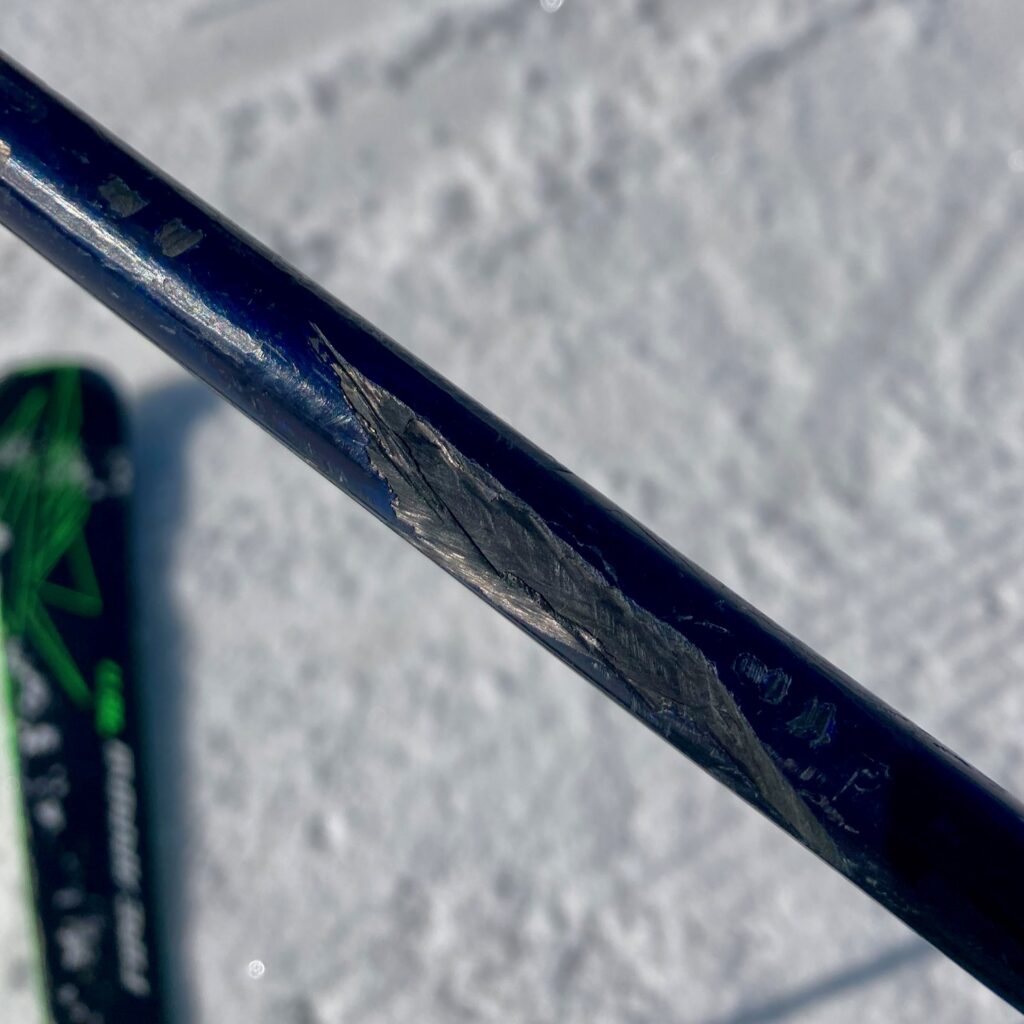
One thing that has become a bit annoying is that the tips are wearing out. These are made of hardened steel with a kind of crown shape, however, the points wear down on rocks and ice, and lose grip, something that’s especially annoying in lift queues and icy conditions. I have tried to resurrect them by reshaping the crown shape using a Dremel-like tool, but I’d really like to replace them with more pointy race-type cylindrical tips.
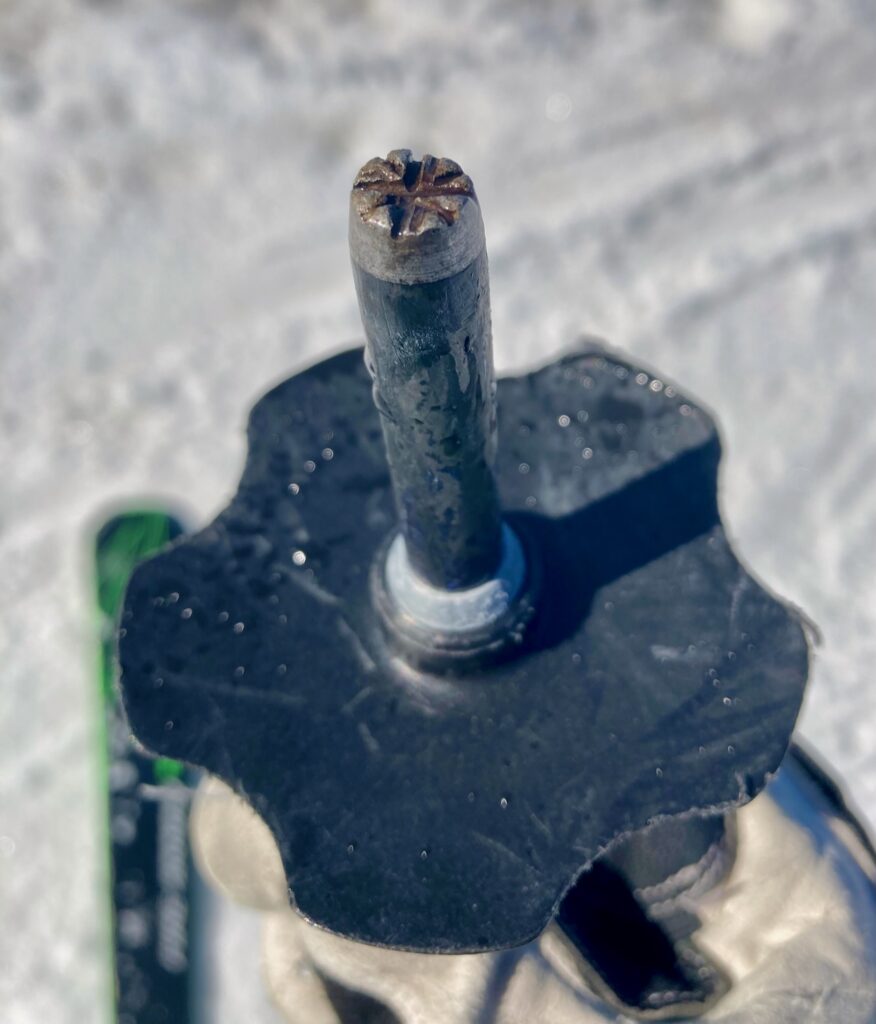
I’ve had about 4 sets of baskets, as they just wear out; I tend to go for medium size ones.
Nobody seems to make bombproof poles like this any more, so I’ll just have to make these last another 800 ski days…
